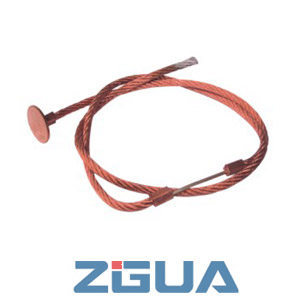A fuse is also called a current fuse, and the IEC127 standard defines it as a "fuse-link". It is mainly used for overload protection. If the fuse is properly placed in the circuit, the fuse will fuse and cut off the current when the current rises to a certain height and heat abnormally, thus protecting the safe operation of the circuit.
The fuse invented by Edison more than a hundred years ago was used to protect the expensive incandescent lamps at that time. With the development of the times, the fuse protects electrical equipment from overcurrent and overheating, and avoids serious damage to electronic equipment caused by internal faults.

When a circuit breaks down or is abnormal, the current will continue to rise, and the rising current may damage some important components in the circuit, or it may burn the circuit or even cause a fire. If the fuse is correctly installed in the circuit, the fuse will fuse and cut off the current when the current abnormally rises to a certain height and heat, thereby protecting the safe operation of the circuit.
Fuse Working Principle
When current flows through the conductor, the conductor will generate heat due to the resistance of the conductor. And the calorific value follows this formula: Q=I2RT; where Q is the calorific value, 0.24 is a constant, I is the current flowing through the conductor, R is the resistance of the conductor, and T is the time for the current to flow through the conductor; according to this formula we It is not difficult to see the simple working principle of the fuse. When the material and shape of the fuse are determined, its resistance R is relatively determined (if the temperature coefficient of resistance is not considered). When current flows through it, it will heat up, and its heat will increase with time. The current and resistance determine the speed of heat generation. The structure of the fuse and its installation status determine the speed of heat dissipation. If the rate of heat generation is less than the rate of heat dissipation, the fuse will not blow. If the rate of heat generation is equal to the rate of heat dissipation, it will not melt for a long time. If the rate of heat generation is greater than the rate of heat dissipation, then more and more heat will be generated. Because it has a certain specific heat and quality, the increase in heat is manifested in the increase in temperature. When the temperature rises above the melting point of the fuse, the fuse blows. This is how the fuse works. We should know from this principle that you must carefully study the physical properties of your selected materials when designing and manufacturing fuses, and ensure that they have consistent geometric dimensions. Because these factors play a vital role in the normal operation of the fuse. Similarly, when you use it, you must install it correctly.
TEL: 86-577-61732588, 62724880
FAX: 86-577-62727213
Email: chinafuse3000@aliyun.com
Zhejiang Zhiguang Fuse Co.Ltd a modern company specialized in high voltage fuse and low voltage fuse production in China.





